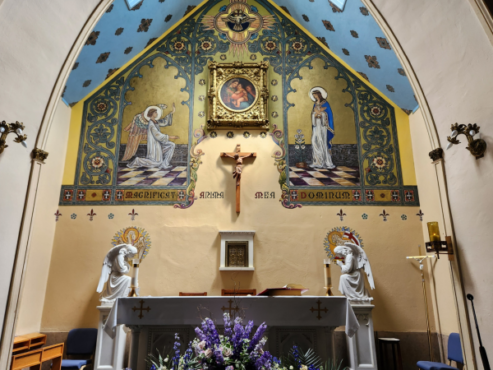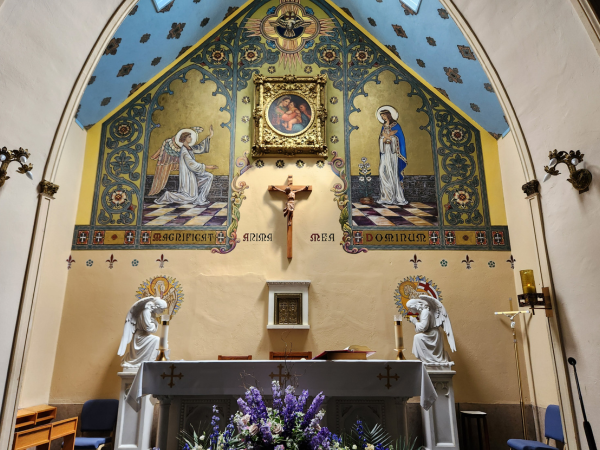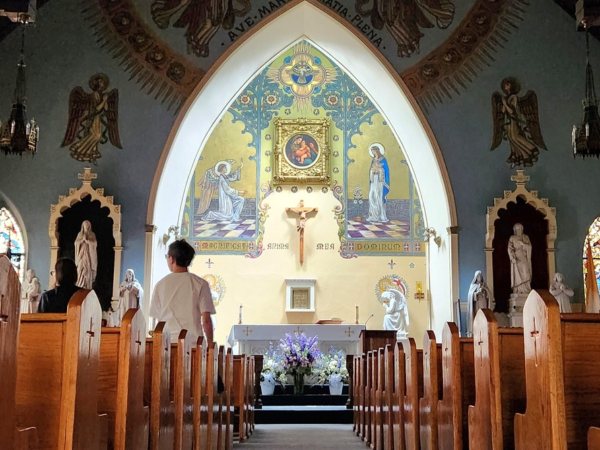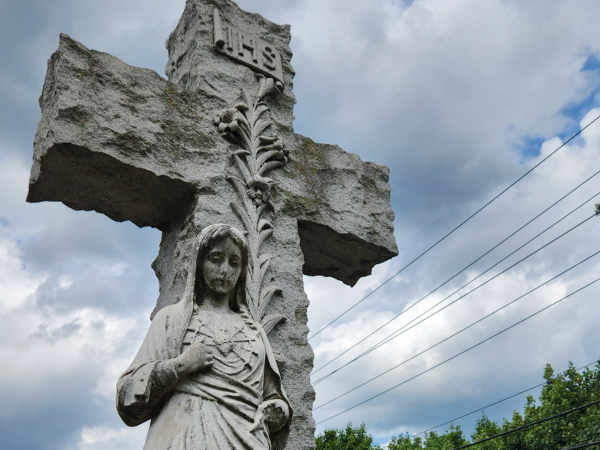WHEN THE CHURCH OF the Madonna was built in the Borough of Fort Lee, N.J. during the 1850s, it was decided to have the holy edifice constructed on the highest geographical point in Bergen County.

PHOTOS BY LOU PONSI/DIOCESE OF ORANGE
To this day, the church’s 86-foot bell tower is still distinctly visible and stands in contrast to the surrounding high-rise buildings and modern structures lining the Northern New Jersey landscape.
The church tower is in plain view of the motorists traveling east on the adjacent highways making their way towards the George Washington Bridge to cross the Hudson River into New York City.

The Church of the Madonna, also known as Madonna Church, was documented by the Historic American Buildings Survey in 1939 and added to the National Register of Historic Places in 1976 for its relevance as an architectural and religious landmark.
For Catholics and all people of faith passing through the New York/New Jersey metropolitan region, a short pilgrimage to the Church of the Madonna will almost certainly by worth the time.
My family attended Sunday Mass in the historic church, which is the oldest Catholic Church in Bergen County and one of oldest extant Catholic edifices in New Jersey.
I’ve attended the funerals of my mother and father, my grandparents and several aunts and uncles, who are interned in a family plot in Madonna Cemetery, which is on church property and has served as the final resting place for the region’s Catholics for more than 150 years.

I had the honor of serving as best man in my cousin’s wedding in this church.
The Church of the Madonna is typical of the early Gothic Revival style of architecture of the mid-19th century in the United States.
According to the nomination form submitted to the National Register of Historic Places in 1976, there were only Catholic missions in New Jersey until 1814, when the state’s first Roman Catholic church was established in Trenton.
Over the next 40 years, only a handful of additional Catholic churches were constructed, with the Church of the Madonna being among them.
Worshipers entering the church pass through a large Gothic-arched double door at the base of the tower.
The walls of the church are brick covered with plaster and were painted in 1973 to give off a marble stone effect.
The church’s interior features a rear balcony and wooden trusses along the top.
The nomination form states that most of the interior décor is of the early 20th Century and includes a J.H. & C.S. Odell pipe organ, which was donated to the church in 1904 by Andrew Carnegie.
Three marble alters date back to 1903 and 18 stained glass windows completed by A.L. Brink of Mayer and Company were installed from 1909 to 1911, the nomination form states.
“Unlike the other Catholic churches which were built in urban regions, the Madonna Church was constructed in a rural region in anticipation, or perhaps fear, of the development which would follow,” the form states.




